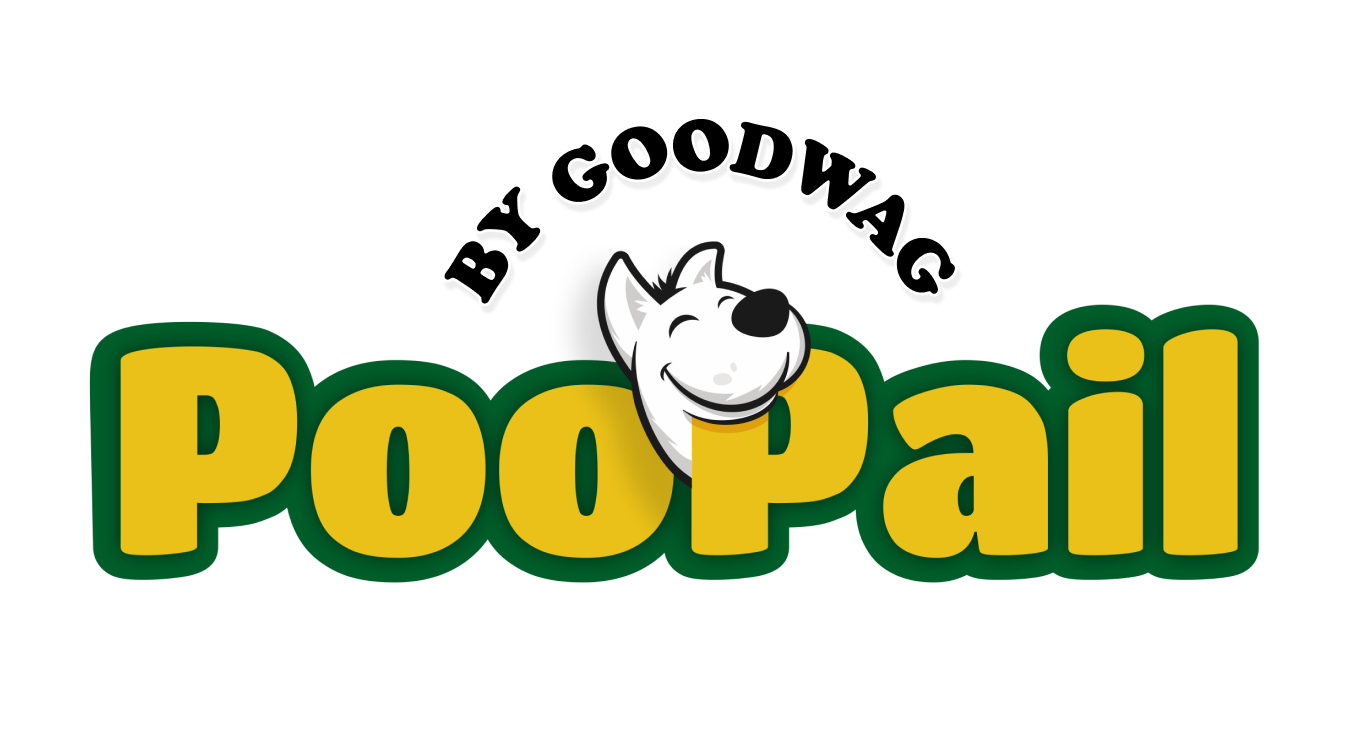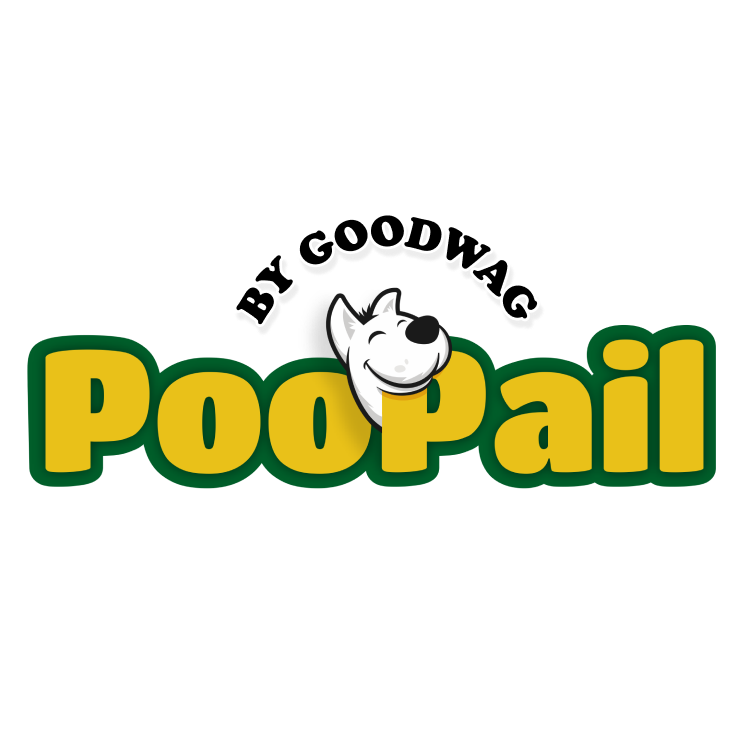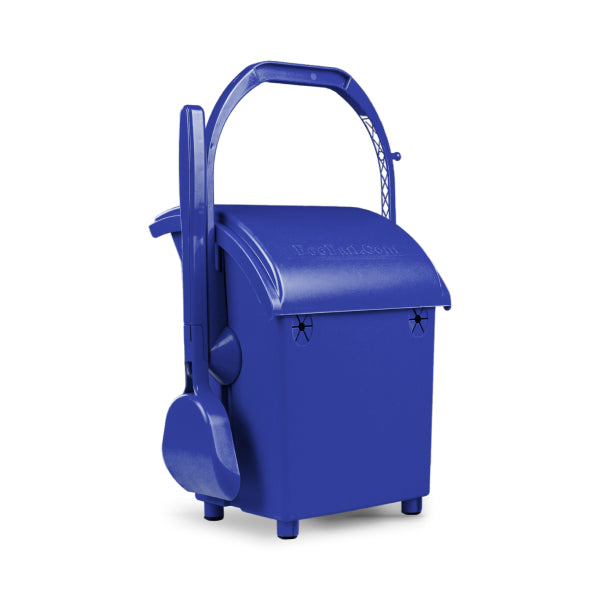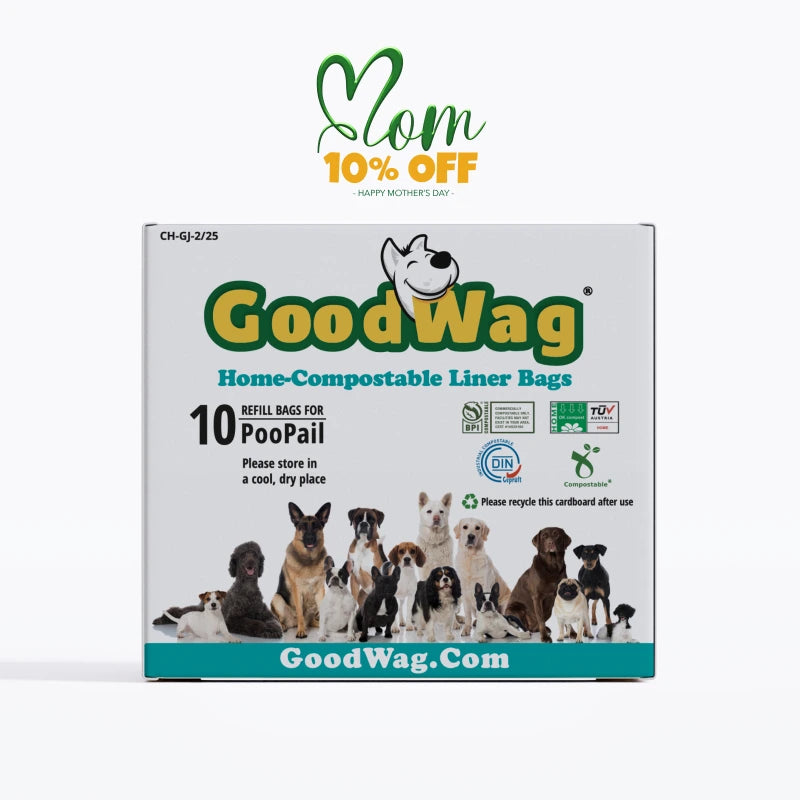Much like human parents, dogs need proper nutrition to be their healthiest, happiest, and most energetic selves. It’s needless to say that dogs love snacking and eating unhealthy food as much as we do, so it’s up to us to make sure they’re eating the right stuff - with the occasional cheat meal here and there, of course. The only difference is - many human foods can be harmful and toxic to dogs, as they may contain ingredients like chocolate, grapes, or onions that can cause serious health issues for Fido.
That’s why it’s worth knowing how to choose the right dog food for your special furry friend. If you’re not quite sure what to look for in the highest quality dog food, keep reading to have a better idea of a dog’s nutritional needs and how to supply them through both store-bought and home-cooked food.
Understanding a Dog’s Nutritional Needs
Life stages
Puppy
Your puppy will start weaning from its mother’s milk or substitute milk around the ages of 3 and 4 weeks. By the time it’s completely off milk in another 3 weeks, you should figure out how to choose dog food going forward. Keep in mind that puppies have higher nutritional needs than adult dogs, as their body is still growing.
That being said, you should choose the right dog food that will meet all its nutritional needs. Calcium, for example, is an important nutrient for bone growth, and puppies, in particular, need it for healthy growth. Picking food labeled “complete and balanced nutrition” is your best bet.
Another important thing to remember is that puppies need to eat more frequently than adult dogs. A 2 or 3 month old pup needs to be fed 4 times a day, then 3 times around the age of 5 months, and twice by the time it becomes a year old. After that, you’ll have to figure out how to choose dog food when the dog turns one and how to meet its new nutritional needs.
Keep in mind that your little furry friend will usually take its time to get used to solid food, so your encouragement is necessary at this point. Consider wetting the dog food you’ve bought with warm water to make it easier for your pup to eat it up. If you still feel like your puppy is struggling, try dipping your fingers in its food, and allowing your four legged friend to lick the food off your fingers. If you’re lucky enough, the little rascal won’t need your intervention at all.
Adult
Once your dog has grown out of puppy stage, you can stop buying puppy food, and choose adult dog food instead. In this stage, your four-legged friend will have more options and a wider variety - great news for your picky eater.
Even at this stage, you’ll have to take certain things, like breed, size, energy levels, even your dog's poop color and variations into consideration while choosing adult food for your dog. Once again, choosing food that is labeled “complete and balanced nutrition” is the optimal choice, to ensure that your dog is getting all the nutrients it needs to lead a healthy and happy life.
Now comes the question, “what ingredients to look for in an adult dog food?” Generally speaking, what you need to look for in healthy dog food are six key components:
- water
- fat
- protein
- carbs
- vitamins
- minerals
Senior
If you have a senior dog, then you’ve most likely noticed that its energy levels aren’t as they used to be - probably nor their appetite. As dogs age, their nutritional needs change drastically. If you’re wondering how to choose dog food for seniors, the answer is simple. You should be looking for low calorie and high-fiber food. This type of food will help prevent obesity and fight against gastrointestinal health issues. Another thing to look for in senior dog food is low-sodium and low-fat treats.
If your senior dog is your one and only, you should opt for food that is specific for its age group. But if you have multiple furry friends, chances are they will get into each other's business and one another’s food. Should that be the case in your household, try buying food that is suitable for all life stages. This way, you won’t have to worry whether or not they’re all getting the nutrition they need. The question of how to choose dog food for older dogs gets a bit more complicated if the said dog has certain health conditions, but more on that later.
Dog Breeds
Different dog breeds have different needs as they are susceptible to different health conditions. Labradors, pugs, and Beagles, for example, can easily become overweight. Meanwhile, Dalmatians are often prone to urinary stones. Breed-specific food can help fight these issues and prevent them in the first place, as they are prepared specifically with the said breed and its health conditions in mind.
That is not to say that all-breed food is bad for your dog. On the contrary, these types of food can sometimes have more benefits than dog-specific ones - depending on your dog’s condition and nutritional needs.
If your dog - regardless of its breed - needs to lose weight, an all-breed, low calorie food can be more beneficial than a breed-specific, high calorie one. When it comes to choosing the right dog food for breed and age, it’s best to check with a veterinarian, and make sure you're providing your pooch with the nutrients it needs.
Dietary Needs for Health Conditions
Another question worth asking is what to look for in weight management dog food. You may also be wondering what to look for in dog food for diabetic dogs, or one with kidney issues, or arthritis. These are questions every dog parent with a canine companion struggling with health conditions asks.
Whatever your dog’s condition is, you’re sure to find food that can meet your four-legged friend’s needs and help it to better health. Once your veterinarian figures out what’s wrong with Fido, they’ll let you know how to change its diet, and recommend you brands that’ll meet your dog’s dietary needs. Whether your pooch needs to eat less carbs and more protein or needs extra supplements or improve the hydration, pet food companies have all sorts of conditions covered.
Reading Dog Food Labels
Once you welcome a new pup into your home, you’ll want to find the best diet that meets its dietary needs. What to feed your dog, how to choose dog food, and how to choose dog treats are questions that can leave you scratching your head - unless you actually know what to look for. That’s why it’s important to check with a veterinarian to see what nutrients your dog needs and buy products accordingly. You can then head over to the store and check dog food labels to see if the product suits your Fido’s needs.
Ingredient lists
Once you know what ingredients to look for in dog food, the first thing that you should do is check the product’s ingredient list. The most important ingredients your pup needs in each meal are water, protein, carbs, fat, vitamins, and minerals. Check each ingredient separately and make sure the product has all that your four-legged friend needs. Most ingredients are listed by their common names, so you shouldn’t have a problem understanding them.
Guarantee
It’s important that all pet food labels display the minimum amount of nutrients as well as the amounts of crude protein, crude fat, crude fiber, and water. They should also specify what makes them stand out and mention the guarantees they offer, like “fat-free” or “multiple-vitamins”. Always remember to check out the guarantees to see if they align with your dog’s nutritional needs.
Feeding Directions
Now that you know how to choose quality dog food, make sure to take a look at the feeding directions. You can then adjust if necessary, based on your dog’s breed, age, weight, and health condition. Remember that the feeding directions are general guidelines and you’ll want to discuss what your dog should eat in a day with the vet.
Calorie Count
One last thing you’ll find on a food label is the calorie count. This is especially important if you want to choose the right dog food for a pooch that needs to lose or gain weight. The calorie count will tell you how much fat there is in the product. This doesn’t have anything to do with the weight of the product; it doesn’t take into account ingredients that don’t have calories, like water and fibers, yet weigh a lot.
Types of Dog Food
Dry Kibble
Still wondering how to choose food for your dog? Well, if you’re like most dog parents, you’ll probably be going for dry kibbles - and for good reason. Dry food lasts longer, doesn’t need to be refrigerated, and is good for your dog’s overall oral health, thanks to its crunchy nature. When it comes to quality, deciding how you choose the best dry dog food highly depends on your dog’s specific needs and not the type of product.
Canned
Despite the many health benefits of dry kibble, most dogs appreciate a good canned meal. The secret lies in the wetness of the food. Unfortunately, not all canned dog food provides the nutrients that your canine companion needs, especially when it comes to digestible protein. This type of food typically has a very high water content, which instantly minimizes the nutrient level. That being said, what you need to look for in canned dog food is a label stating that it’s 100% nutritionally complete. Only then can you be sure that all of your dog’s nutritional needs are being met.
Semi Moist
Your pooch deserves the occasional treat, doesn’t it? In this case, you can choose a dog food that is semi moist, like dog burgers or pork chops. These are the least healthy of them all, but still provide your dog with some added nutrition every now and then. So why not treat your furry friend with a little burger every once in a while?
Home Cooked
Many dog owners prefer to have full control on what goes into their pet’s mouth and may choose to stick with home-cooked meals. As time-consuming and somewhat expensive as this might be, it’s the only way to be absolutely sure that your dog is eating the best they can eat.
But even with home cooked meals, you need to know how to pick dog food that won’t harm Fido. Chicken, turkey, fish, rice are all great options to feed your dog. Just make sure that you are well acquainted with dog nutrition before you embark on this journey with your pooch.
When to Seek Veterinarian Advice
As soon as you bring your dog home for the first time, you’ll want to consult the vet about nutrition. Based on age, size, breed, and health condition, a vet can tell you what ingredients you should look for in dog food and what bad ingredients are in dog food which you should look out for.
Even if you’ve had your Fido for years now, regular checkups are always a good idea. They’re the best way you can know how your dog is doing health-wise, and you can learn how to choose dog food accordingly.
Cost Considerations
While some dog parents have a dedicated big budget when it comes to dog food, some others wonder how to choose a dog food that won’t break the bank. Luckily, the options are plenty. For instance, kibbles tend to be less expensive than home cooked meals and canned foods, and they last quite some time.
And now that you know what to look for in good dry dog food as well as what to look for in canned dog food, you can make an educated decision. Trust us when we say there are many budget-friendly and high-quality products out there. You just need to look for what’s best for your pooch.
Transitioning to New Food
Your vet will most likely tell you how to choose dog food specific for your pup’s needs. If you’ve been feeding it the wrong type of dog food, be careful not to immediately change its diet. Unless extremely urgent, even the vet will advise you to switch to the new food gradually. Mix the new food in small amounts with the old one, and increase the amount slowly while reducing the old - until Fido gets used to the new. You’ll be surprised at how stubborn your dog might be when it comes to accepting new food and a new diet, so be patient.

To sum it all up, how you choose dog food highly depends on your furry friend. Its breed, age, weight, and health conditions play a major role in how you choose the best dog food. While you most likely know their breed, age, and weight, you’ll still need an expert opinion on your dog’s overall health and what its breed needs and doesn’t.
Some other things to take into consideration while you choose your dog food is the type of product and the expenses that come with it. Once you have that all figured out, you can give your puppy the nutrition it truly needs and deserves, ultimately bringing out the best in it. After all, nothing beats having a dog full of love and energy around, and good food helps to guarantee and maintain that for a very long time.















Leave a comment
This site is protected by hCaptcha and the hCaptcha Privacy Policy and Terms of Service apply.